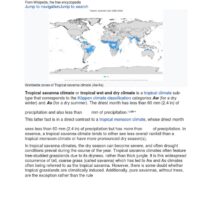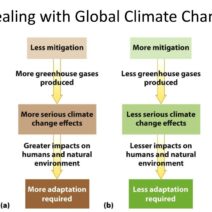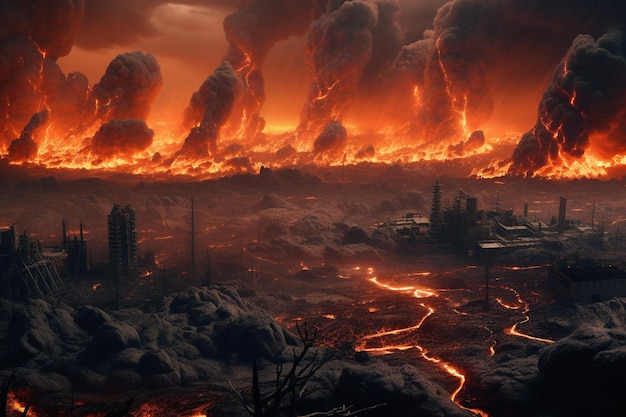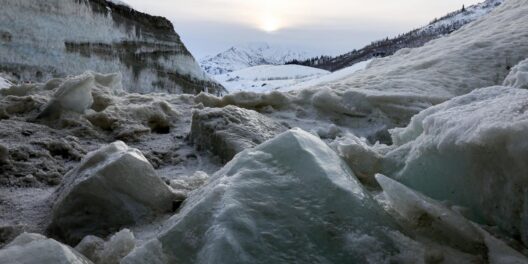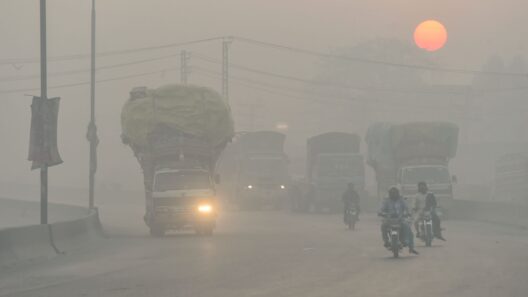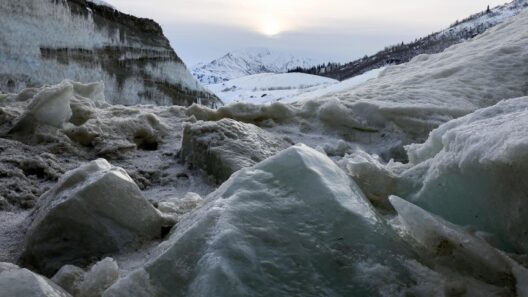Global warming, often perceived merely as an increase in average temperatures, represents a multifaceted crisis with extensive repercussions. Its influence extends far beyond mere heat; it plays a pivotal role in exacerbating natural disasters both locally and nationally. Understanding this complex relationship requires an exploration of various types of disasters, including hurricanes, wildfires, flooding, and droughts, alongside their socio-economic implications.
The correlation between rising global temperatures and the frequency and intensity of hurricanes has grown increasingly evident. Warmer ocean surfaces serve as a potent energy source for storm systems, enabling them to develop more rapidly. This phenomenon is not only quantified in terms of hurricane numbers but also in the severity of their impacts. For instance, the destructive power measured in storm surges, wind speeds, and rainfall intensity demonstrates a troubling trend. As ocean temperatures rise, hurricanes are likely to attain higher wind speeds and produce more rainfall, leading to catastrophic flooding in coastal regions. Furthermore, the increased sea level due to melting polar ice caps and thermal expansion only amplifies the dangers hurricanes pose.
Inland, the ramifications of global warming manifest manifestly in the form of wildfires. Elevated temperatures create conditions ripe for wildfires, particularly in arid and semi-arid ecosystems. These fires not only threaten natural habitats but also pose significant risks to human safety and infrastructure. Notoriously, the American West has experienced a marked increase in both the frequency and scale of wildfires. The longer fire seasons, combined with the dry conditions precipitated by climate change, create and escalate tinderbox environments. As vegetation dies during prolonged droughts, it serves as ample fuel, making the ignition of wildfires all the more probable and devastating.
Flooding, another catastrophic outcome of climate change, is insidiously connected to global warming. As atmospheric temperatures rise, the capacity of air to hold moisture increases, leading to more intense and frequent precipitation events. This increase translates into a greater risk of flash floods and riverine flooding, which can overwhelm infrastructure and lead to considerable loss of life and property. Urban areas, particularly those lacking adequate drainage systems, are vulnerable to such flooding events. Climate change does not respect regional boundaries; therefore, the repercussions are felt both locally and nationally, straining resources and emergency management systems.
Droughts present another grim aspect of climate change, with global warming altering precipitation patterns and increasing evaporation rates. Many regions now face unprecedented dry spells, jeopardizing agriculture and water supply. Crop yields plummet, causing food insecurity and economic distress, particularly in vulnerable communities. The socioeconomic implications of drought can reverberate far beyond the immediate locale, affecting national food systems and economies. Prolonged drought not only hampers agricultural production but can also lead to increased competition for dwindling water resources, contributing to geopolitical tensions.
As natural disasters proliferate in frequency and intensity due to climatic changes, the insurance industry grapples with rising costs associated with disaster recovery. Homes are being reconstructed in areas prone to flooding or wildfires, leading to escalating premiums and potential policy unavailability. This financial burden disproportionately impacts low-income households who may not have the resources to reinvest in climate-resilient infrastructure. The interplay of climate change and socioeconomic inequality becomes starkly apparent, with marginalized communities suffering the most from declining adaptive capacity.
Transitioning towards an examination of governmental responses, it becomes apparent that addressing the nexus between global warming and natural disasters requires innovative strategies at both local and national levels. Upgrading infrastructure to withstand floods, promoting fire-resistant building designs, and investing in sustainable agricultural practices are pivotal measures. Collaboration across governmental agencies, researchers, and communities is essential to devise comprehensive preparedness plans that mitigate the impact of natural disasters exacerbated by climate change. For instance, enhancing early warning systems can provide critical data, enabling quicker responses to imminent threats.
Internationally, nations must adopt cohesive policies that target greenhouse gas emissions while fostering resilience against climate-related disasters. The Paris Agreement, for example, underscores the importance of global cooperation to limit temperature increases, hence alleviating some of the anticipated calamities linked to climate change. Implementing strict emissions standards, transitioning to renewable energy sources, and promoting regenerative agricultural practices are all steps that facilitate a more sustainable future.
Moreover, community engagement is a vital element in combating climate change and its attendant disasters. Grassroots movements raise awareness and galvanize action, influencing policy decisions. Educational programs can empower individuals to adopt sustainable practices, reduce energy consumption, and advocate for crucial changes within their localities. This bottom-up approach fosters resilience, uniting communities in the fight against the adverse effects of global warming as they work collaboratively to develop local adaptation strategies.
In conclusion, the intricate relationship between global warming and natural disasters is evident. It is a stark reminder that climate change is not solely an environmental issue, but a multifaceted crisis that threatens economic stability, public health, and social equity. The urgency to act cannot be overstated; concerted efforts at local, national, and international levels are imperative. By understanding the broader implications of climate change, society can pave the way toward a more resilient future, one where the costs of inaction are no longer acceptable.

